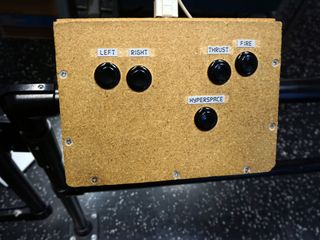Computer History: From The Antikythera Mechanism To The Modern Era
In this article, we shed light on the most important moments in computer history, acknowledging the people that have contributed to this evolution.
The First Video Games And Game Consoles
Covering just the most significant parts of the gaming console and video game history would require a lot of space. We'll just do a quick rundown of some of the most important moments in gaming that opened the door to today's video game entertainment, along with some interesting photographs taken at the Computer History Museum.

The first ever video game on a computer was made by Steve Russell on the PDP-1 minicomputer of MIT's RLE club, and it was called "Spacewar!" This was in 1962, and the game was soon a success on PDP-1 computers. Alan Kotok and Bob Saunders even built a gamepad to make the control of the game easier.


The first prototype of a game console was made in 1967 by Ralph Baer, a German engineer, and it was called the "Brown Box." It worked on a standard television and the first game, called "chase game," was very simple. With help from his colleagues at the electronics firm where he worked, Baer developed 12 games and managed to even add a light gun to the system. Eventually, the team used the experience gained from the "brown box" prototype, and the first commercial game console, the Magnavox Odyssey, hit the stores in 1972.


Atari's Pong wasn't a game console but an arcade machine, but it helped make video games popular. In 1972 Allan Alcorn finished a working Pong prototype and, along with Nolan Bushnell, the founder of Atari, installed the machine at a local bar. There was so much excitement about the arcade game that a few days later the coin mechanism couldn't receive any more quarters because it was full.


Fairchild Semiconductor is a pioneer in manufacturing transistors and integrated circuits. The company was founded in 1957, and for many years it played an active role in computer hardware. Fairchild was involved in other endeavors as well, including gaming consoles. The first home video game console that used programmable ROM cartridges and featured a microprocessor (CPU) was the Fairchild Channel F, which was released in 1976, a year before the Atari Video Computer System (VCS), or Atari 2600 as it was called later. The Channel F fared pretty well in sales, although it didn't manage to beat the highly popular Atari VCS.




The Atari 2600 game console was released in 1977, and a year later the fist Atari 8-bit home computers were introduced. The 400 and 800 models featured a full keyboard and used a MOS 6502 CPU clocked at 1.79 MHz. The most interesting fact about these computers was their ability to double as game consoles.
Atari games, along with software applications, came on plug-in cartridges, and thanks to the co-processor chips, the graphics and sound capabilities were much better than other computers of this era (e.g. the Apple II and Commodore PET). It took four years for a competing offer to make its appearance on the market in the form of the mighty Commodore 64.
Stay on the Cutting Edge
Join the experts who read Tom's Hardware for the inside track on enthusiast PC tech news — and have for over 25 years. We'll send breaking news and in-depth reviews of CPUs, GPUs, AI, maker hardware and more straight to your inbox.
Finally, in 1982 Atari Inc. released a port of the famous Pac-Man game for the Atari 2600. Although the port wasn't very successful, mostly because of the limited time that the lead programmer was given to complete the task, Atari was still able to sell around seven million copies of it.
Current page: The First Video Games And Game Consoles
Prev Page The First Graphics Processing Units (GPUs) Next Page Video Games And Game Consoles Of The 1980s, 1990s And BeyondAris Mpitziopoulos is a Contributing Editor at Tom's Hardware US, covering PSUs.
Most Popular

